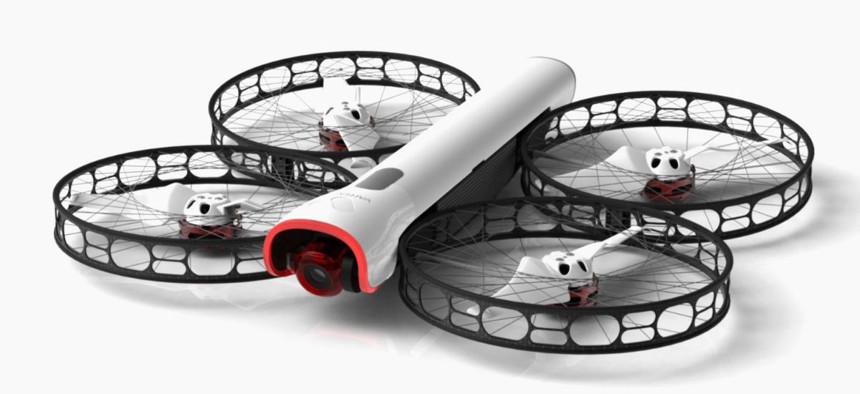This Might Be the Best New Drone to Buy for Beginners

The Snap Drone Vantage Robotics
Safety first!
Don’t be like Enrique Iglesias. In May the multi-platinum singing sensation was playing a sold-out show in Tijuana, Mexico, when a drone dropped down near the stage to get some close-up shots. He reached out to it to pull it closer and sliced his fingers open on the spinning propellor blades.
Even for those of us without drones swooping down on our Latin pop live shows, the safety of the ever-increasing number of drones buzzing around our heads is a real issue. The most popular consumer drone on the market, the DJI Phantom series, weighs almost 3 lbs, and if it fell out of the sky, it would likely crush your skull. But a new drone from Vantage Robotics, the Snap, claims to be the safest consumer drone—and it also happens to be very easy to fly.
Quartz flew a late-stage prototype of the Snap with Vantage founder Tobin Fisher in August. Fisher demonstrated that anyone with an iPhone or Android phone should be able to fly the Snap—even if you have no experience, or if you’ve tried and crashed other drones in the past.
Press a button on the Snap’s app, and its engines start up. Tilt the phone forward and it’ll zip out of your hand and into the sky; tilt it to the right and it goes right. It’s as easy as playing a game on your phone. Vantage’s custom-made guards around the propellor blades—which look more like bike wheels than propellors—make the Snap safe to hold in your hand, and grab as it returns to you. Iglesias may want to think about adding one to his stage act.
The Snap weighs about 1 lb—a third the weight of a Phantom—and while that’d still hurt if it fell on you, the drone is designed to break apart on impact, which would lessen the blow, and then can be put back together. The Snap is held together by a series of strong magnets.
The drone’s propellor base folds up, allowing it to fit in even the smallest backpack. Fisher reminded us of the adage that the best camera is the one you have on you, saying he wanted to build a drone that was small enough and easy enough to operate that you could carry it with you all the time.
Fisher argues that the Snap will be able to compete with more established drone companies. It comes with a built-in stabilizing 4K camera, 20 minutes of flight time, and some of the same tricks you’ll find on other flagship models. The drone can be programmed to quickly “orbit” around someone holding the controls, or track them as they move. Fisher’s co-founder Joe van Niekerk used the Snap to film his daughter practicing some BMX tricks, he said, adding that he wasn’t worried about the drone hurting her if it fell, or if she happened to run into it.
The Snap can be preordered for $895 from Vantage’s website, and Fisher said it will ship to the first customers in the spring. After the preorder period, it’ll cost $1,295—around the same price as a Phantom, as well as 3D Robotics’ Solo drone.
Granted, that’s a lot of money to drop on an untested company. DJI is on the third generation of its Phantom line, and Parrot’s Bebop and AR Drone lines are about half as expensive as the Snap, so it will be competing against some strong established incumbents.
But there’s much to recommend the Snap. While the market for drones in the US is still in its “Wild West” phase, and the Federal Aviation Administration has yet to codify its regulations for safety and for properly incorporating drones into the commercial airspace, the Snap stands out as a model for drones of the future. It’s just as fun to play as any other consumer drone on the market, but unlike the others, you don’t have to worry about what happens when it falls.





